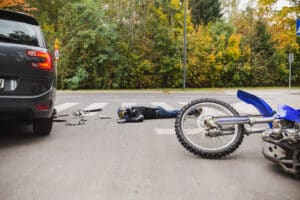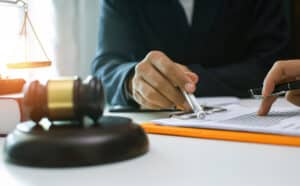Pedestrian accidents typically occur due to negligent driving behaviors, such as speeding, distracted driving, or failing to yield at crosswalks. If a driver strikes a pedestrian due to such negligence, the pedestrian may have grounds to sue for damages related to the injuries sustained. A knowledgeable Phoenix pedestrian accident attorney can help navigate the legal process, gather evidence, and establish liability. They can also assess the extent of damages, negotiate with insurance companies, and represent the accident victim in court if necessary. Having an experienced personal injury attorney increases the chances of securing fair compensation for medical expenses, lost income, and pain and suffering resulting from the pedestrian collision.
How Do Negligent Drivers Cause Pedestrian Accidents?
Negligent drivers are a significant factor in pedestrian accidents, often leading to serious injuries or fatalities. Negligence in driving refers to a lack of reasonable care while operating a vehicle, which can manifest in various dangerous behaviors.
- One of the primary ways negligent drivers cause pedestrian accidents is through distracted driving. This includes activities such as texting, using a mobile phone, or engaging with in-car technology. When drivers divert their attention away from the road, they are less likely to notice pedestrians –especially in busy urban areas or near crosswalks. A moment of distraction can lead to a tragic accident, as drivers may fail to yield to pedestrians who have the right-of-way.
- Speeding is another common cause of pedestrian accidents. Many drivers exceed speed limits, particularly in residential zones or near schools where pedestrians are more likely to be present. Higher speeds reduce a driver’s reaction time and increase the severity of any potential collision. When a driver approaches a crosswalk or a pedestrian area at excessive speed, the likelihood of an accident – and its severity – skyrockets.
- Additionally, driving under the influence of drugs or alcohol significantly impairs a driver’s judgment and reaction times. Intoxicated drivers often misjudge distances and speeds, making them more likely to overlook pedestrians or miscalculate when to stop. This impairment can turn a routine crossing into a life-threatening situation.
- Failing to obey traffic signals and signs also leads to pedestrian accidents. Drivers who run red lights or fail to stop at stop signs put pedestrians at extreme risk, particularly in intersections where many accidents occur.
- Moreover, aggressive driving, which includes behaviors like tailgating or road rage, can further endanger pedestrians. In such scenarios, drivers may become so focused on their own frustration that they neglect to watch for pedestrians, leading to reckless actions that can cause accidents.
Most Common Injuries in Pedestrian Collisions
Pedestrian accidents involving negligent drivers can lead to a range of severe injuries:- One of the most common injuries in pedestrian accidents is head trauma. When a pedestrian is struck by a vehicle, their head often makes contact with the car or the ground, resulting in concussions, skull fractures, or traumatic brain injuries (TBIs). These injuries can have lasting effects on cognitive function and may require extensive medical treatment.
- Another common injury is damage to the extremities, particularly the legs and arms. Fractures and breaks in bones are frequently observed due to the impact of a vehicle. For instance, a pedestrian’s leg may be crushed or broken upon collision, leading to complications such as surgery, lengthy rehabilitation, or permanent mobility issues. Injuries to the arms may occur as pedestrians instinctively raise them to shield themselves, resulting in fractures or dislocations.
- Soft tissue injuries, such as sprains, strains, and bruises, are also common. These injuries can affect muscles, ligaments, and tendons and may vary in severity. Although they may not be as immediately serious as fractures, soft tissue injuries can lead to chronic pain and long-term complications if not properly treated.
- Spinal injuries are another serious consequence of pedestrian accidents. A collision can cause damage to the spine or spinal cord, potentially leading to partial or complete paralysis. Such injuries can dramatically alter a person’s life, requiring extensive rehabilitation and support for daily activities.
- Internal injuries, including damage to organs, can also occur during a pedestrian accident. The force of impact can result in lacerations, contusions, or ruptures to vital organs such as the spleen, liver, or lungs. These injuries may not be immediately apparent and can lead to severe complications if not diagnosed and treated promptly.
- Lastly, psychological trauma is an often-overlooked consequence of pedestrian accidents. Survivors may experience post-traumatic stress disorder (PTSD), anxiety, or depression as they cope with the aftermath of the incident. These mental health challenges can affect a person’s overall well-being and quality of life.
Steps of Filing a Pedestrian Accident Lawsuit
If someone runs you over and causes you injuries, you can file a personal injury lawsuit against the at-fault driver. Filing a pedestrian accident lawsuit involves several critical steps to ensure that you receive the compensation you deserve for your injuries.- The first step in filing a lawsuit is investigating the accident circumstances. This includes gathering evidence such as police reports, witness statements, photographs of the scene, and any available surveillance footage. An attorney can assist in collecting this information and determining liability, which is necessary for building a strong case.
- Once the investigation is complete, the next step is to assess the damages. This involves calculating the medical expenses, lost earnings, pain and suffering, and other related costs incurred due to the accident. An attorney can help quantify these damages, ensuring that you do not overlook any potential compensation.

- After assessing the damages, an attorney will typically send a demand letter to the negligent driver’s insurance company. This letter outlines the facts of the case, the injuries sustained, and the compensation sought. It serves as an official request for payment and initiates the negotiation process. A skilled attorney knows how to negotiate effectively with insurance companies to secure a fair settlement.
- If negotiations do not yield a satisfactory outcome, the next step is to file a formal lawsuit. This involves drafting and submitting a complaint to the appropriate court, outlining the case against the negligent driver. The complaint must be filed within a specific timeframe, known as the statute of limitations, which varies by jurisdiction. An attorney ensures that all legal documents are completed accurately and filed on time.
- Once the lawsuit is filed, the discovery phase begins. This phase allows both parties to exchange information, gather evidence, and take depositions. During discovery, an attorney can identify weaknesses in the opposing side’s case and strengthen their own. Effective communication and thorough preparation during this stage is vital for a successful outcome.
- If the case does not settle during discovery, it may proceed to trial. A trial involves presenting evidence and arguments to a judge or jury, who will ultimately decide the outcome. An experienced pedestrian attorney can effectively advocate throughout this process, presenting compelling arguments and cross-examining witnesses to support the case.
- Alternatively, parties may choose to engage in alternative dispute resolution (ADR), such as mediation or arbitration, to resolve the disputed issues outside of court. An attorney can guide you through these processes and negotiate a settlement that meets your needs.
Helpful Evidence in a Pedestrian Accident Lawsuit
In pedestrian accident lawsuits, the evidence collected is key in determining liability and securing compensation for injuries. Various types of evidence play a key role in building a strong case. Here are some of the most important types:- Police Reports – When a pedestrian accident occurs, law enforcement typically arrives on the scene to investigate. They document the incident in a police report, which includes details about the accident, statements from the involved parties, and any citations issued. This report can provide essential information about who was at fault and is often a critical piece of evidence in court.
- Witness Statements – Eyewitness accounts can significantly affect a case. Statements from people who saw the accident unfold can help corroborate the pedestrian’s version of events. Collecting contact information from witnesses is essential, as their testimony may be vital in supporting the claim.
- Photographs and Videos – Visual evidence, such as photographs or videos of the accident scene, can be incredibly persuasive. This includes images of vehicle positions, skid marks, road signs, and injuries that the pedestrian sustained. Surveillance footage from nearby buildings can also provide valuable context and clarity about how the accident occurred.
- Medical Records – Medical documentation detailing the injuries sustained in the accident is important for establishing the extent of damages. This includes hospital records, treatment plans, and bills. These records help quantify the physical, emotional, and financial toll of the injuries, which is important for calculating compensation.
- Expert Testimony – In some cases, expert witnesses may be needed to strengthen the case. For example, accident reconstruction specialists can analyze the circumstances surrounding the pedestrian accident and provide insight into how it occurred. Medical experts can testify about the long-term effects of the injuries, reinforcing the victim’s claims.
- Traffic Camera Footage – Many urban areas are equipped with traffic cameras that monitor intersections and roadways. This footage can provide an objective view of the accident, showing exactly what happened at the moment of impact. Accessing this footage can be vital in proving liability.
- Vehicle Data – Many modern vehicles often have event data recorders (EDRs), which capture critical information such as speed, braking, and acceleration just before a crash. This data can provide insights into the driver’s behavior leading up to the accident.
How Much is a Pedestrian Accident Lawsuit Worth?
The value of a pedestrian accident lawsuit can vary widely based on several factors, including the severity of injuries, the circumstances of the accident, and the degree of negligence involved. Understanding the compensation available is essential for victims seeking to recover their losses.- Medical Expenses – One of the primary losses is for medical expenses. This includes hospital bills, surgery costs, rehabilitation, medication, and any future medical care needed due to the injuries sustained in the accident. Accurate documentation of all medical expenses is important for recovering these costs.
- Pain and Suffering – Victims may also seek compensation for pain and suffering, which refers to the physical pain and emotional distress experienced as a result of the accident. This type of loss is more subjective and often calculated using various methods, such as multiplying medical expenses by a certain factor to estimate the overall effect on the victim’s quality of life.

- Lost Wages – If the injuries result in missed work time, victims can claim compensation for lost wages. This includes not only the income lost during recovery but also potential future earnings if the injuries bring about a reduced earning capacity or long-term disability. Evidence such as pay stubs, tax returns, and letters from employers can help substantiate these claims.
- Emotional Distress – In addition to physical pain, many victims experience emotional distress, anxiety, or depression following an accident. Compensation for emotional distress acknowledges the psychological toll the accident takes on an individual’s life. A mental health professional’s assessment can be useful in supporting these claims.
- Loss of Enjoyment of Life – This loss addresses the effects of the injuries on a victim’s ability to enjoy daily activities and hobbies. For example, if an injured person can no longer participate in sports or other recreational activities they once enjoyed, they may be entitled to compensation for that loss.
- Permanent Disability or Disfigurement – If the accident results in long-term disabilities or significant disfigurement, the victim may be eligible for additional compensation. The compensation recovered for this damage considers the profound effect such conditions have on a person’s life, self-esteem, and future opportunities.